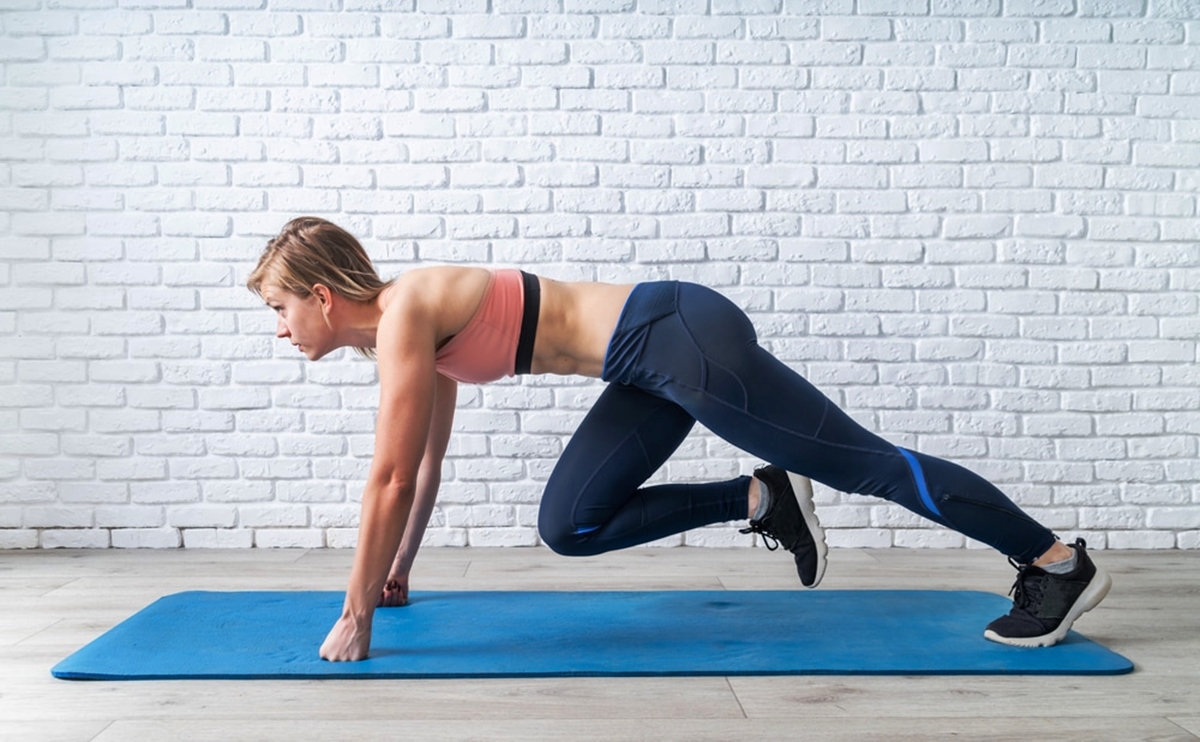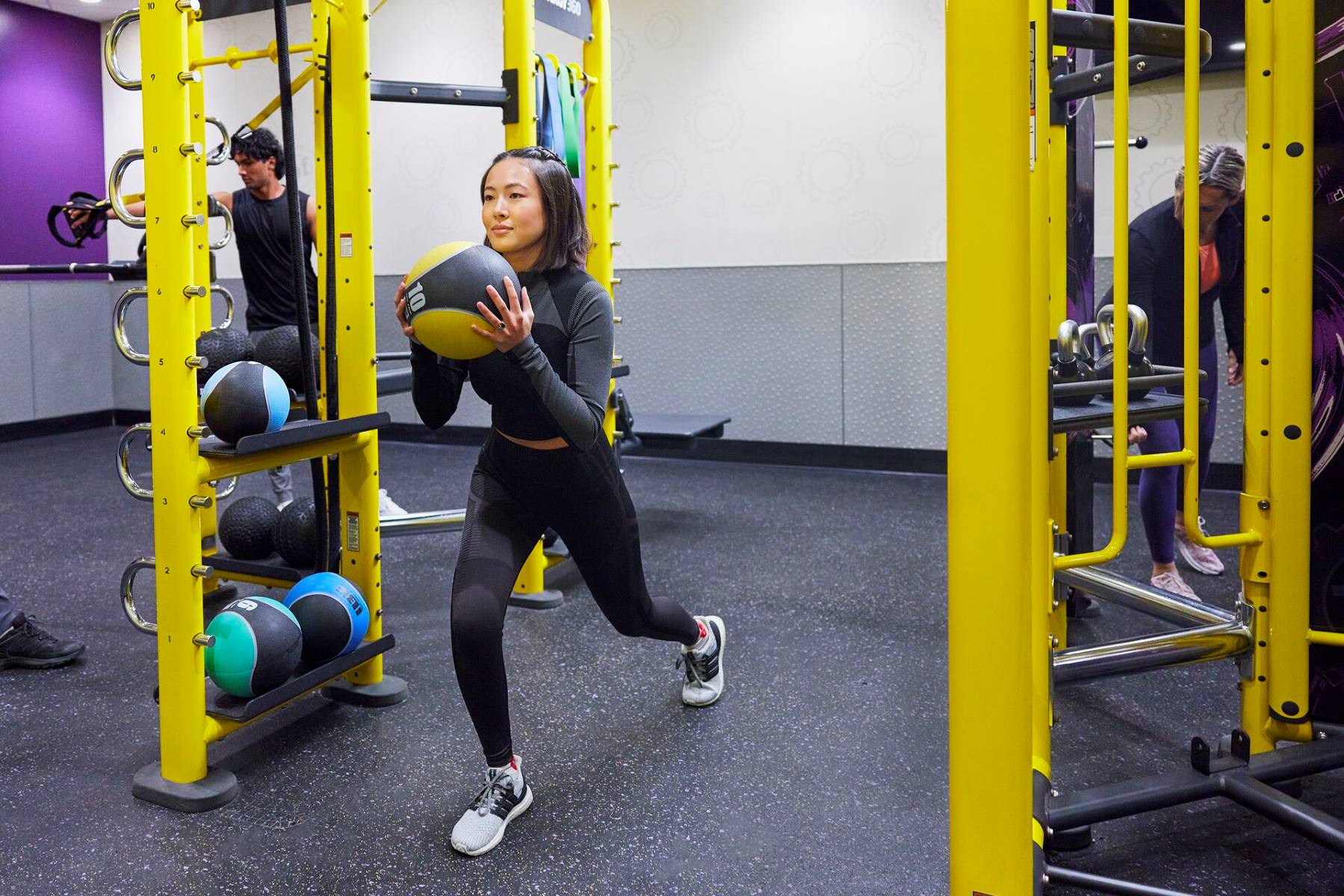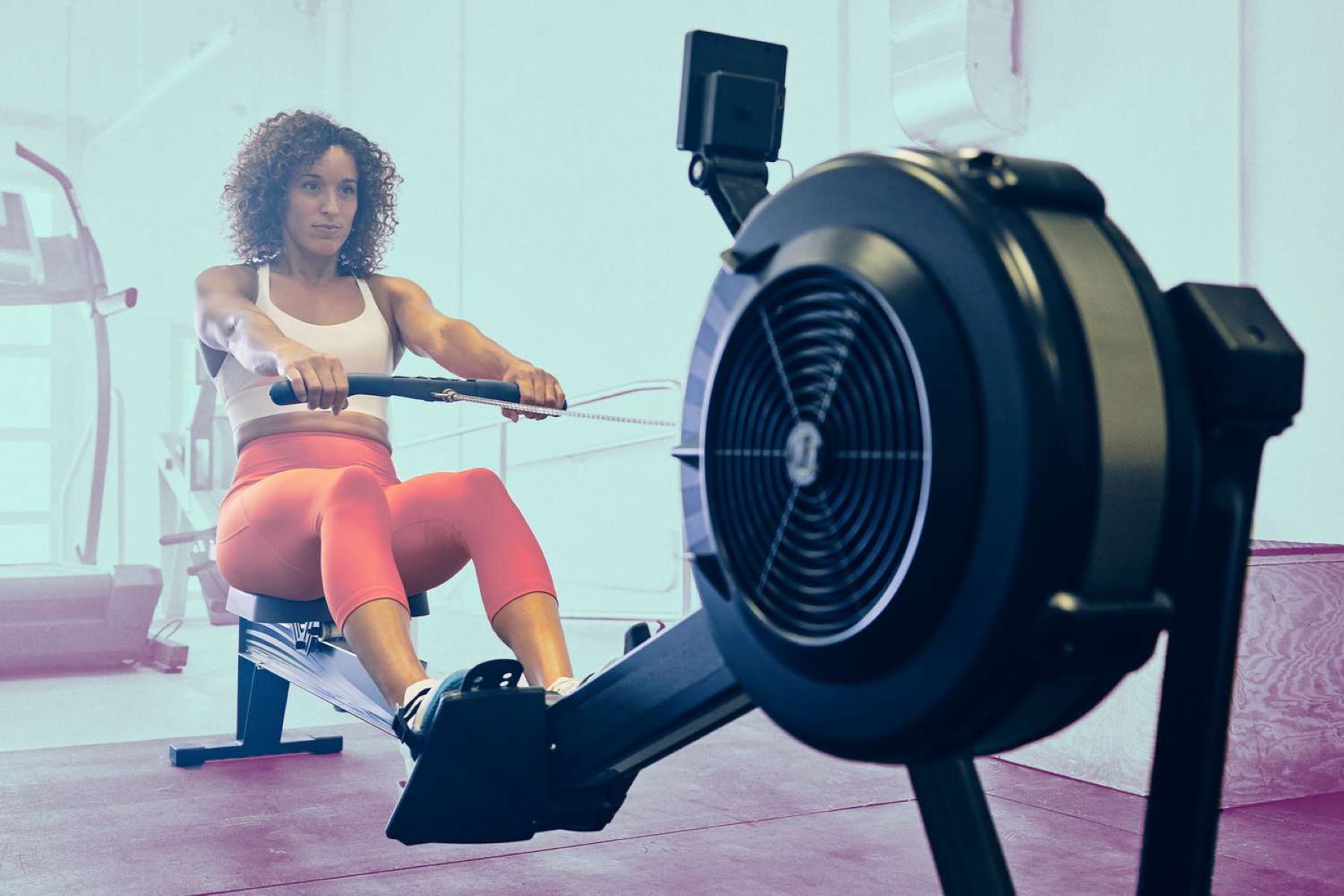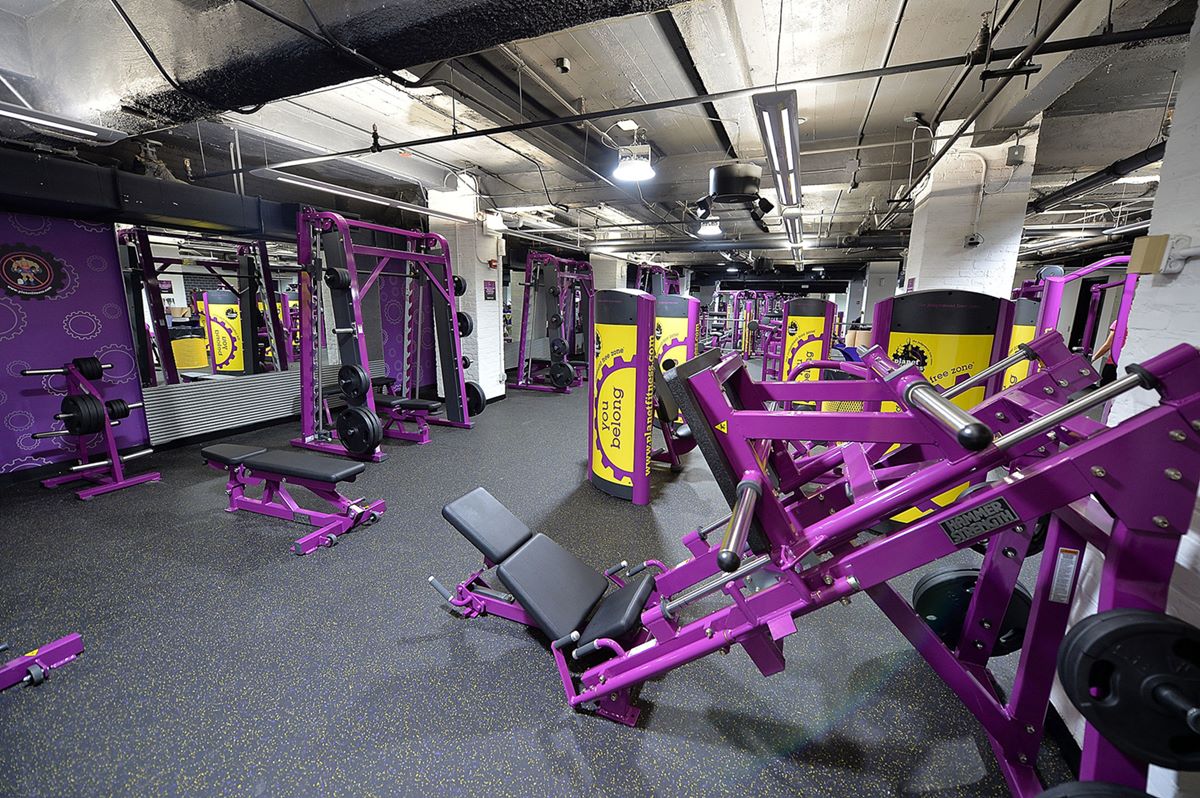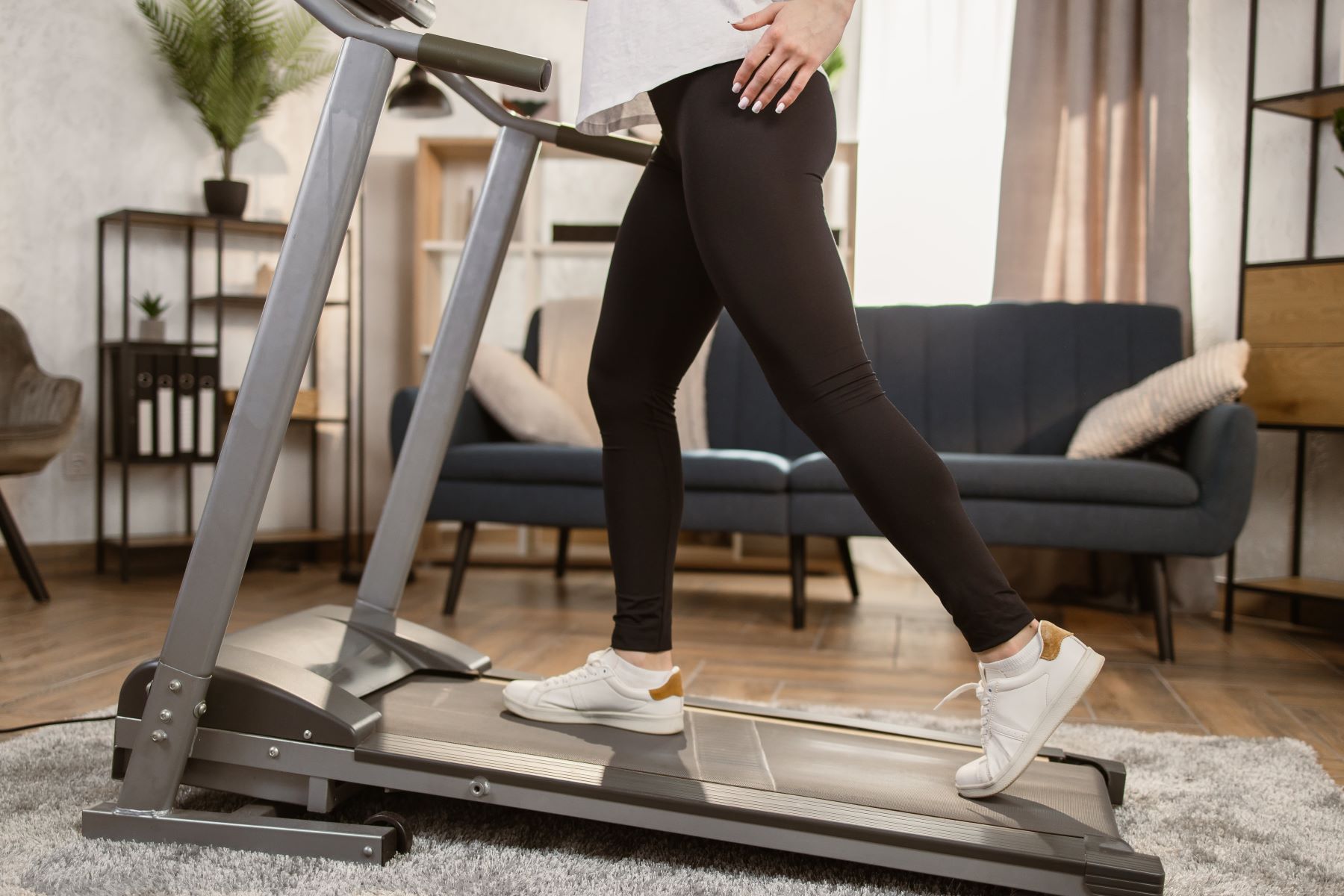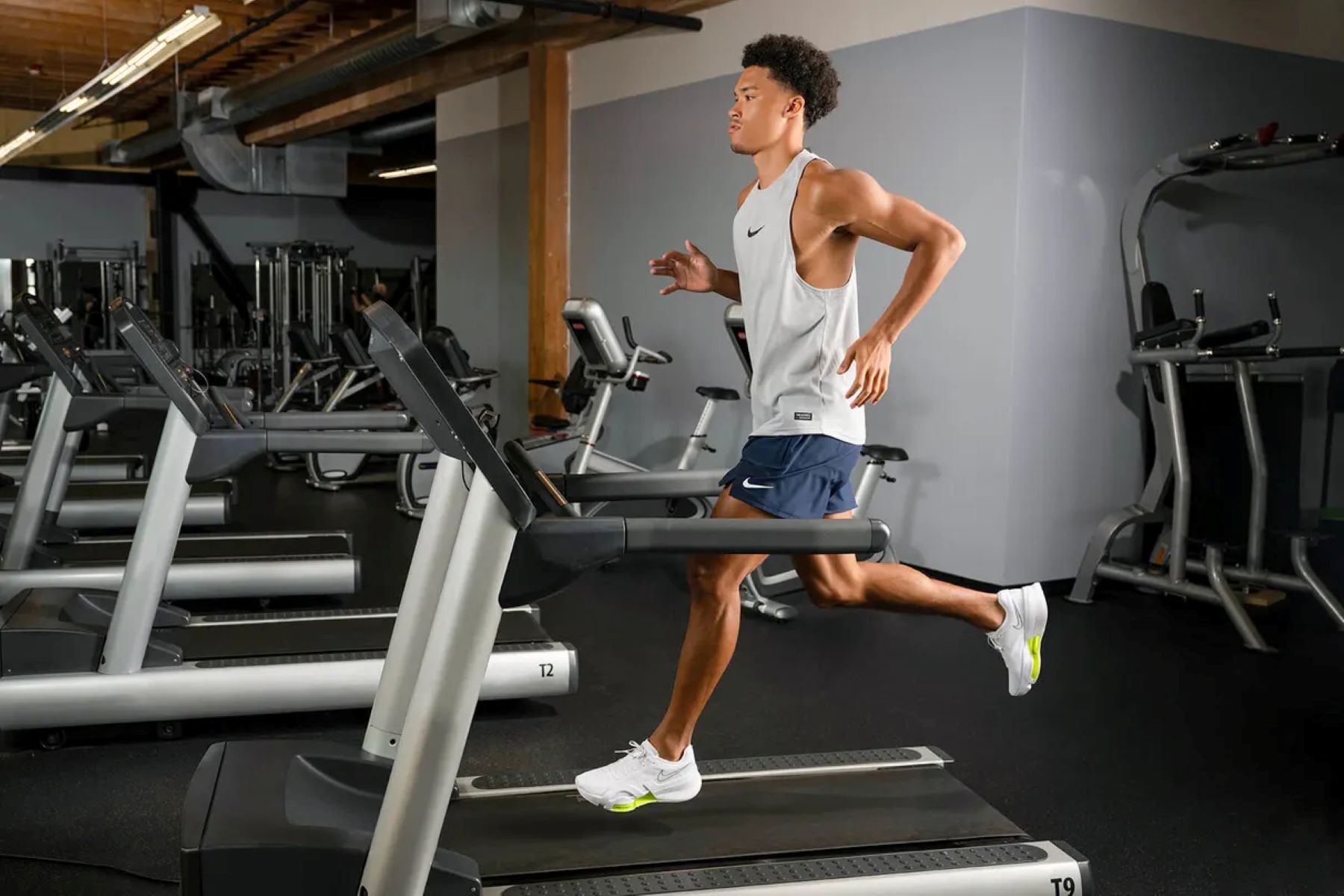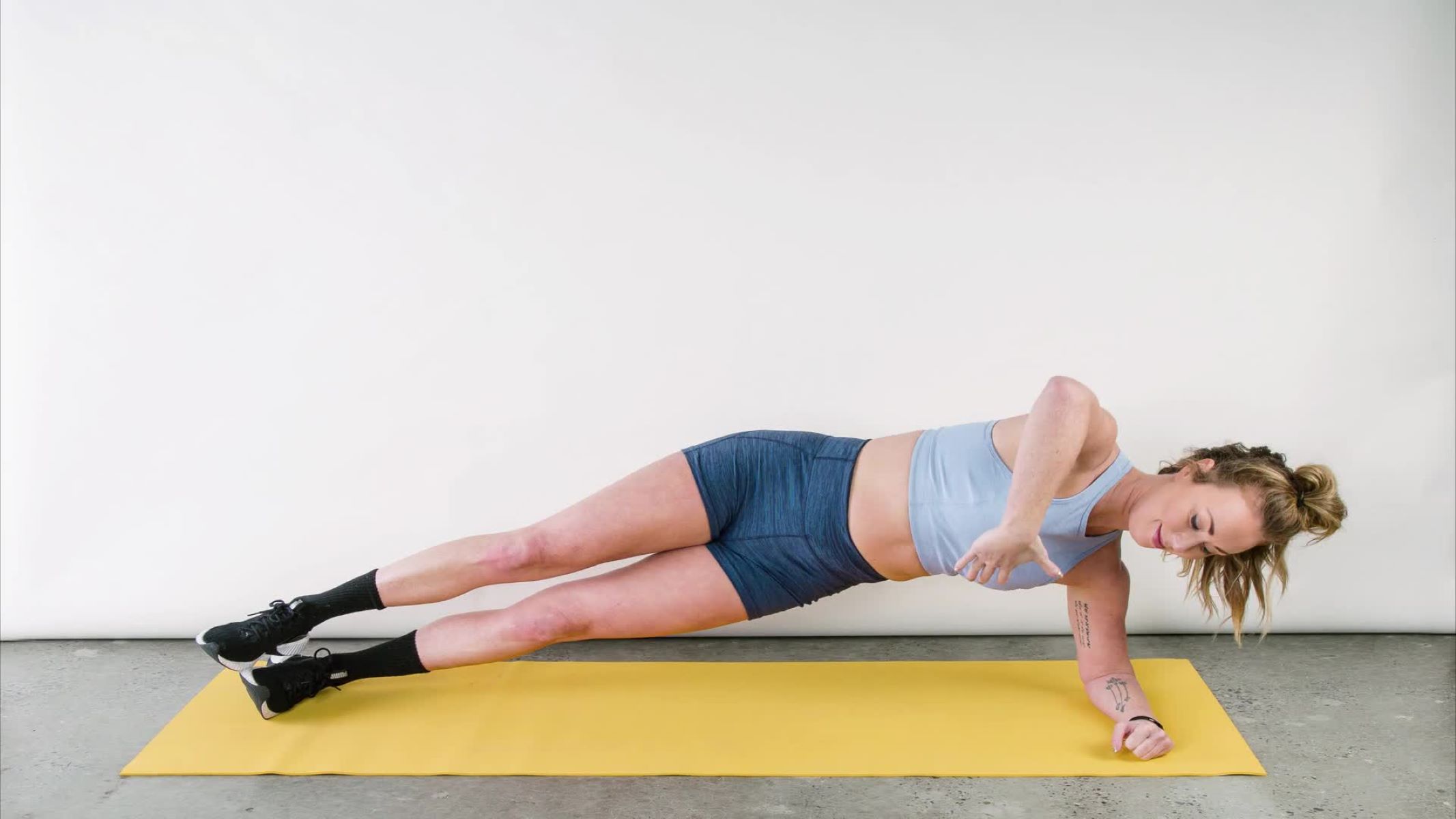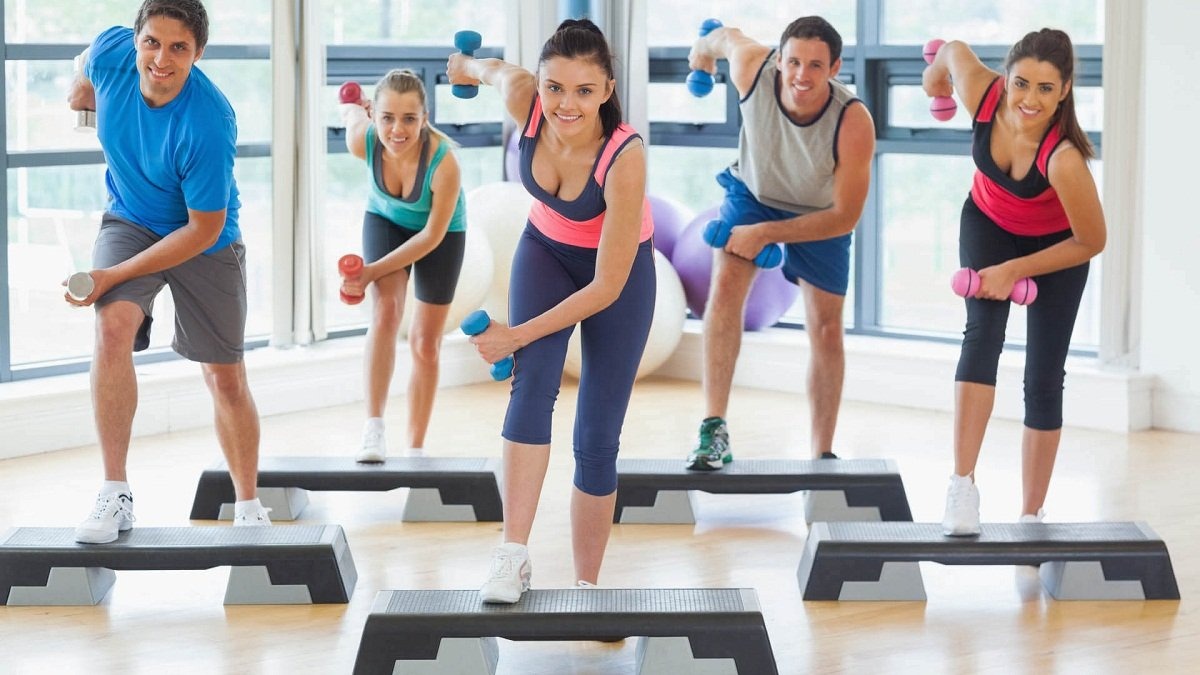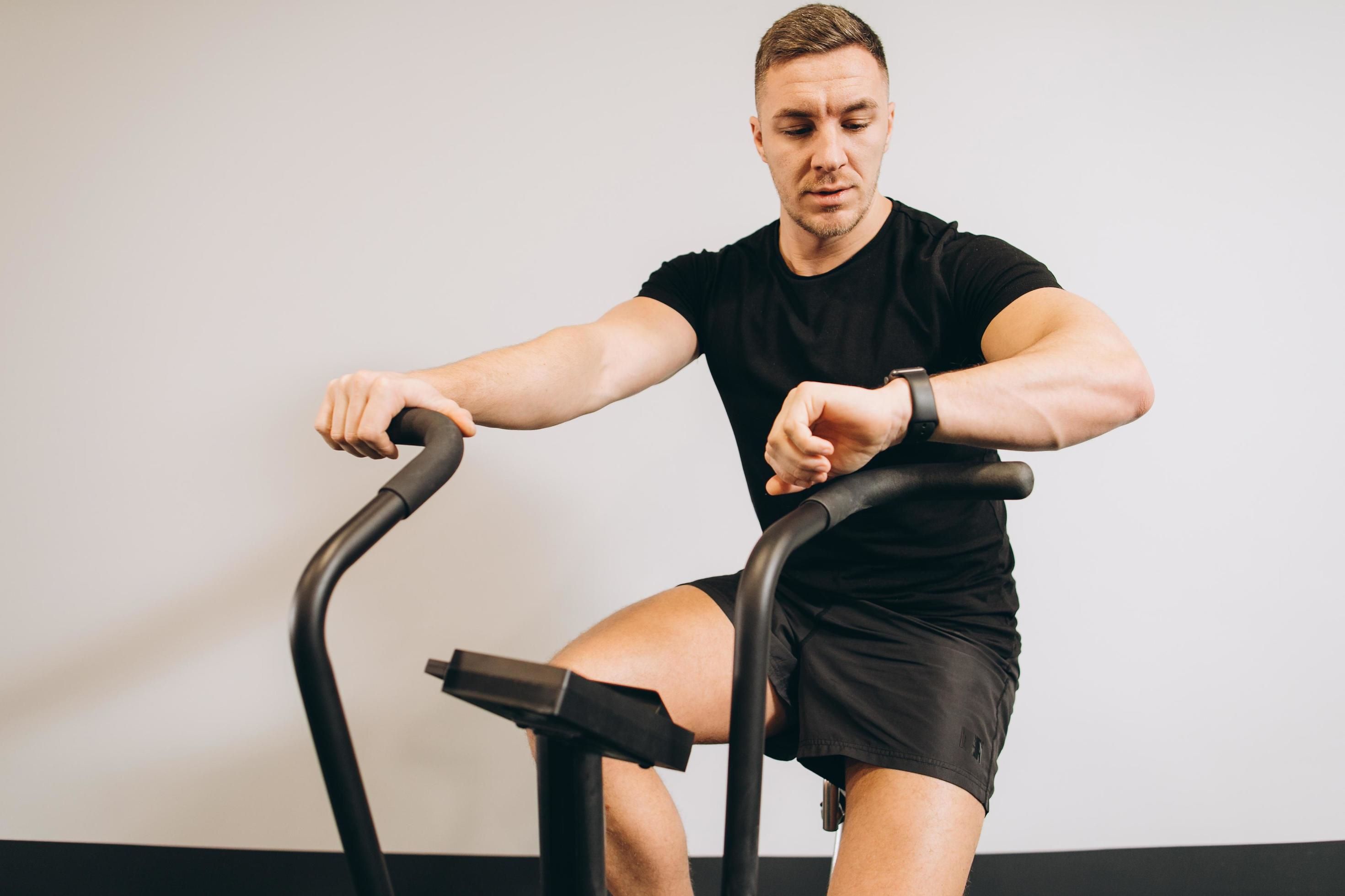Home>Misc>Featured>Which Is Better, Treadmill Or Rowing Machine?


Featured
Which Is Better, Treadmill Or Rowing Machine?
Modified: January 22, 2024
Discover which exercise equipment is better for you - a treadmill or a rower. Read our detailed comparison and make an informed decision. Featured article.
Introduction
When it comes to choosing the right exercise equipment for your home gym, the options can be overwhelming. Two popular choices are the treadmill and the rower, both of which offer an effective cardiovascular workout. However, deciding which one is better suited for you depends on various factors, such as your fitness goals, physical condition, and personal preferences.
In this article, we will compare the treadmill and the rower to help you make an informed decision. We will delve into the benefits of each exercise machine, the muscles targeted during workouts, the calories burned, the impact on joints, cardiovascular fitness improvements, versatility and variability of exercises, as well as space and storage considerations.
By understanding the unique attributes of both the treadmill and the rower, you’ll be able to determine which equipment aligns better with your fitness needs. So, lace up your shoes or strap in on your seat, and let’s find out which equipment reigns supreme – the treadmill or the rower!
Treadmill Overview
The treadmill is a popular piece of exercise equipment that simulates the experience of running or walking indoors. It consists of a moving belt that allows users to walk, jog, or run at their preferred pace, without the need for outdoor terrain or weather conditions. Treadmills also often come equipped with features such as inclines and speed adjustments, offering greater workout intensity and variety.
One of the key advantages of using a treadmill is its versatility. Whether you’re a seasoned runner or just starting your fitness journey, the treadmill enables you to customize your workouts to suit your fitness level and goals. With the ability to adjust speed and incline, you can easily increase or decrease the intensity of your workouts.
The treadmill primarily targets the lower body muscles, including the quadriceps, hamstrings, calves, and glutes. It provides an effective way to strengthen and tone these muscles while engaging in a low-impact exercise. By incorporating incline settings, it can also target different muscle groups, such as the calves and glutes, even more effectively.
In terms of calorie burning, the treadmill is an excellent choice. Running or brisk walking on a treadmill can lead to significant calorie expenditure, depending on factors such as speed, incline, and duration of the workout. It offers an efficient way to burn calories and maintain a healthy weight.
Furthermore, using a treadmill can help improve cardiovascular fitness. Regular aerobic exercise on a treadmill can enhance your heart and lung capacity, leading to improved endurance and stamina. It can also contribute to lower blood pressure and a reduced risk of cardiovascular diseases.
When it comes to convenience, treadmills offer the advantage of being easily accessible at any time. Whether you prefer to exercise in the early morning or late at night, having a treadmill at home allows you to work out at your convenience, without having to worry about gym hours or weather conditions. Additionally, some treadmills come with built-in entertainment systems, such as televisions or music players, making your workouts more enjoyable.
Overall, the treadmill provides a versatile and effective way to incorporate cardio workouts into your fitness routine. Its ability to target multiple muscle groups, burn calories, improve cardiovascular fitness, and offer convenience makes it a popular choice for many individuals.
Rower Overview
The rowing machine, also known as a rower or ergometer, is an exercise equipment that simulates the motion of rowing a boat. It consists of a seat, footrests, and a handlebar connected to a flywheel. By pulling the handlebar towards your chest while pushing your legs and sliding back on the seat, you engage various muscle groups and create a smooth and fluid rowing motion.
One of the key benefits of using a rowing machine is its ability to provide a full-body workout. Unlike some other cardio machines that primarily target specific muscle groups, rowing engages both the upper and lower body muscles. The rowing motion primarily targets the back, shoulders, arms, and legs, making it an excellent choice for those looking to strengthen and tone multiple muscle groups simultaneously.
Rowing is also highly effective for burning calories and achieving weight loss goals. The combination of upper and lower body movements, coupled with the resistance provided by the flywheel, results in a high-intensity workout that can help you burn a significant amount of calories in a shorter period of time. This makes the rower an efficient option for those looking to maximize calorie expenditure during their workouts.
One of the unique advantages of rowing is its low-impact nature. Unlike activities such as running or jumping, which can put stress on the joints, rowing is a non-weight-bearing exercise that reduces the risk of joint injuries. The smooth gliding motion of rowing minimizes the impact on the knees and ankles, making it suitable for individuals with joint issues or those looking for a low-impact workout option.
In addition to its muscle-building and calorie-burning potential, rowing is an excellent exercise for improving cardiovascular fitness. The rhythmic motion of rowing, combined with the resistance provided by the flywheel, challenges your heart and lungs, improving their strength and endurance over time. Regular rowing workouts can contribute to a healthier cardiovascular system and overall improved fitness levels.
Another advantage of the rower is its versatility. Rowing machines often come with adjustable resistance settings, allowing you to tailor the intensity of your workouts to your fitness level and goals. You can also vary your rowing technique, using different grips or incorporating interval training, to keep your workouts engaging and challenging.
When it comes to space and storage, rowing machines are generally more compact compared to treadmills. Many rowers can be easily folded and stored after use, making them a convenient choice for those with limited space in their homes.
In summary, the rowing machine provides a full-body workout, burns calories, improves cardiovascular fitness, and offers a low-impact exercise option. Its versatility, space-saving design, and muscle-building benefits make it a popular choice for individuals looking to integrate effective cardio and strength training into their fitness routine.
Comparison of Benefits
Both the treadmill and the rower offer numerous benefits for your fitness journey. Let’s compare the benefits of each to help you decide which equipment aligns better with your goals and preferences.
Treadmill Benefits:
- The treadmill provides a versatile exercise option, allowing you to customize your workouts by adjusting speed and incline.
- Running or brisk walking on the treadmill targets the lower body muscles, such as the quadriceps, hamstrings, calves, and glutes.
- Treadmill workouts offer an effective way to burn calories, helping with weight management and maintenance.
- Regular treadmill workouts can improve cardiovascular fitness, enhancing heart and lung capacity.
- Treadmills offer the convenience of accessible workouts at any time, without being dependent on weather conditions or gym hours.
Rower Benefits:
- Using a rowing machine provides a full-body workout, engaging both the upper and lower body muscles for a comprehensive training experience.
- The rowing motion primarily targets the back, shoulders, arms, and legs, making it an excellent choice for total body toning and strength building.
- Rowing is highly effective for calorie burning, making it an efficient option for weight loss goals.
- Rowing is a low-impact exercise, reducing the risk of joint injuries and making it suitable for individuals with joint issues.
- Regular rowing workouts improve cardiovascular fitness, enhancing heart and lung health.
- Rowing machines are usually more compact and can be easily folded and stored, making them a convenient choice for limited space.
It’s important to consider your personal fitness goals and preferences when deciding which equipment to incorporate into your routine. If you’re looking for a versatile workout with a focus on lower body muscles, calorie burning, and accessibility, the treadmill may be the ideal choice for you. On the other hand, if you prefer a full-body workout with an emphasis on strength building, low-impact exercise, and space-saving convenience, the rower may better suit your needs.
Ultimately, both the treadmill and the rower provide effective cardiovascular workouts and numerous benefits for overall fitness. By understanding the unique advantages of each equipment, you can make an informed decision that aligns with your goals and preferences.
Comparison of Muscles Worked
When it comes to comparing the muscles worked by the treadmill and the rower, there are notable differences due to the distinct movements involved in each exercise. Let’s take a closer look at the muscles targeted by both machines:
Treadmill Muscles Worked:
The treadmill primarily focuses on the lower body muscles, including the quadriceps, hamstrings, calves, and glutes. As you walk, jog, or run on the moving belt, these muscles contract to propel your body forward. The incline feature on treadmills enables you to increase the activation of specific muscle groups, such as the calves and glutes. Additionally, the core muscles are engaged to maintain balance and stability while performing treadmill exercises.
Rower Muscles Worked:
The rowing machine offers a comprehensive full-body workout, targeting both the upper and lower body muscles. The rowing motion primarily engages the back muscles, including the latissimus dorsi, rhomboids, and trapezius. The shoulders, specifically the deltoids, also play a significant role in the pulling motion. The rowing stroke involves pushing with the legs, engaging the quadriceps and hamstrings, and extending the legs activates the glutes. Furthermore, the arms, which include the biceps and triceps, actively participate in the rowing motion.
While the treadmill mainly focuses on the lower body, the rower engages a broader range of muscles throughout the body. This makes rowing a more efficient choice for individuals seeking a holistic and balanced workout that targets various muscle groups. However, it’s essential to consider your specific fitness goals and preferences when deciding which machine to incorporate into your routine.
If your primary goal is to tone and strengthen the lower body muscles, the treadmill can be a suitable option. It allows you to adjust the speed and incline to vary the intensity and target specific muscle groups. On the other hand, if you’re looking for a full-body workout that engages both your upper and lower body, the rower is an excellent choice. The rowing motion provides a comprehensive cardiovascular and strength training session, maximizing muscle activation and calorie burn.
Ultimately, both the treadmill and the rower offer unique advantages in terms of muscles worked. Consider your overall fitness goals and desired muscle engagement to determine which machine aligns better with your specific needs.
Comparison of Calories Burned
The number of calories burned during a workout is an important factor to consider when comparing the treadmill and the rower. The calorie burn can vary based on several factors, including intensity, duration, and individual characteristics. Let’s examine the calorie-burning potential of both machines:
Treadmill Calories Burned:
The treadmill offers various options for calorie burning, depending on the intensity and duration of your workout. Running or walking on a treadmill can lead to significant calorie expenditure due to the cardiovascular demands of the activity. The number of calories burned on a treadmill is influenced by factors such as speed, incline, body weight, and fitness level. Higher speeds and incline settings require more effort and result in a higher calorie burn. Additionally, running tends to burn more calories compared to walking, generally providing a more intense cardiovascular workout.
Rower Calories Burned:
The rowing machine is known for its exceptional calorie-burning capabilities. Rowing involves a combination of upper and lower body movements, engaging a substantial number of muscle groups simultaneously. This results in a high-intensity workout that promotes significant calorie burn. The resistance provided by the flywheel adds an additional challenge, further boosting the calorie expenditure. The number of calories burned during a rowing workout depends on factors such as rowing intensity, stroke rate, duration, body weight, and individual fitness level. Rowing at a higher intensity and maintaining a consistent pace can maximize the calorie-burning potential.
While both the treadmill and the rower can help burn calories effectively, the rowing machine tends to provide a higher calorie burn per unit of time due to its full-body engagement. Rowing combines both cardio and strength training, resulting in a more efficient calorie-burning workout. However, it’s important to note that individual factors, such as fitness level and intensity, can influence the calorie burn on both machines.
Ultimately, the choice between the treadmill and the rower should consider your personal preferences, fitness goals, and desired calorie-burning potential. If your primary objective is to maximize calorie burn in a shorter period, the rower may be the preferable option. However, if you enjoy running or prefer a variety of workout options, the treadmill can also provide an effective means to burn calories and improve cardiovascular fitness.
Remember that both machines offer excellent opportunities for calorie burn, and maintaining consistency and intensity in your workouts is key to achieving your fitness goals.
Comparison of Impact on Joints
Considering the impact on joints is crucial when deciding between the treadmill and the rower, especially if you have joint concerns or conditions. Let’s explore how each machine affects the joints:
Treadmill Impact on Joints:
Using a treadmill involves repetitive impact on the joints, particularly in the lower body. Running or walking can place stress on the knees, ankles, and hips, especially if you’re overweight or have preexisting joint issues. While treadmills with cushioned decks can help absorb some of the impact, they may still present challenges for individuals with joint pain or injuries. It’s essential to listen to your body and adjust the speed, incline, and duration of your treadmill workouts to minimize joint impact.
Rower Impact on Joints:
The rowing machine offers a low-impact workout, making it a favorable choice for individuals with joint concerns. Rowing is a non-weight-bearing exercise that reduces the stress on the joints. The smooth gliding motion of rowing significantly minimizes the impact on the knees and ankles, making it a suitable option for those looking for a joint-friendly workout. However, it’s essential to maintain proper rowing technique and posture to avoid strain on the back and shoulders.
Choosing the right exercise machine for your joints depends on your individual circumstances. If you have joint pain, arthritis, or are recovering from an injury, the rowing machine may be a more suitable option. The low-impact nature of rowing minimizes stress on the joints, allowing you to engage in cardiovascular activity without exacerbating joint discomfort. However, if you enjoy running or prefer the variety of options provided by a treadmill, you can still use it effectively by adjusting the intensity and listening to your body’s signals.
Regardless of the machine you choose, it’s crucial to prioritize joint health by practicing proper form, listening to your body, and gradually increasing the intensity and duration of your workouts. It’s also advisable to consult with a healthcare professional or a fitness expert before starting any new exercise routine, especially if you have existing joint conditions.
Remember, both the treadmill and the rower can provide effective cardiovascular workouts, and you can modify your approach to ensure minimal impact on your joints. The key is to find a balance that promotes fitness while maintaining the long-term health and well-being of your joints.
Comparison of Cardiovascular Fitness
Cardiovascular fitness, also known as aerobic fitness, is an essential aspect of overall health and well-being. Both the treadmill and the rower offer effective means of improving cardiovascular fitness. Let’s explore how these machines compare in terms of their impact on cardiovascular health:
Treadmill and Cardiovascular Fitness:
The treadmill is widely recognized as a popular choice for improving cardiovascular fitness. Running or brisk walking on a treadmill provides an excellent aerobic workout that boosts heart rate and increases lung capacity. The continuous, rhythmic motion of the treadmill engages large muscle groups, primarily in the lower body, and challenges the cardiovascular system. By adjusting the speed and incline, you can tailor the intensity of your treadmill workouts to improve endurance and stamina. Regular treadmill workouts can contribute to lower resting heart rate, improved blood circulation, and a reduced risk of cardiovascular diseases.
Rower and Cardiovascular Fitness:
The rowing machine is equally effective in improving cardiovascular fitness. Rowing requires a combination of upper and lower body movements, making it a full-body cardiovascular exercise. The rowing motion engages multiple muscle groups and significantly increases heart rate, resulting in a substantial cardiovascular challenge. The resistance provided by the flywheel adds an extra level of intensity, making rowing an effective option for improving aerobic capacity. Regular rowing workouts can lead to improved heart and lung function, increased oxygen uptake, enhanced endurance, and improved overall cardiovascular health.
Both the treadmill and the rower have demonstrated positive effects on cardiovascular fitness. The choice between the two machines depends on personal preferences and considerations such as joint health, muscle engagement, and overall workout enjoyment.
If you prefer running or walking and want the flexibility to adjust speed and incline to customize your workout, the treadmill may be the preferred choice for improving cardiovascular fitness. It offers the opportunity for high-intensity interval training (HIIT) and varied workout options to challenge your cardiovascular system.
However, if you are seeking a full-body cardiovascular workout that engages both the upper and lower body, the rowing machine is an excellent option. Rowing provides a unique combination of strength and aerobic training, allowing you to focus on cardiovascular fitness while simultaneously building muscle endurance.
Ultimately, the key to improving cardiovascular fitness is consistency and intensity in your workouts. Whether you choose the treadmill or the rower, incorporating regular aerobic exercise into your routine will yield significant benefits for your cardiovascular health.
Comparison of Versatility and Variability
When considering exercise equipment for your home gym, versatility and variability are important factors to consider. Let’s compare the treadmill and the rower in terms of the range of exercises they offer and the ability to vary your workouts:
Treadmill Versatility and Variability:
The treadmill offers a high level of versatility and variability in your workouts. With adjustable speed and incline settings, you have the ability to customize your workouts based on your goals and fitness level. You can choose to walk, jog, or run at different speeds, simulate uphill climbs by adjusting the incline, or incorporate interval training for added intensity. Many treadmills also come equipped with pre-programmed workout options that provide varying levels of intensity and duration. Additionally, some advanced treadmills offer features like virtual training, interactive workouts, and entertainment systems to keep your workouts engaging and motivating.
Rower Versatility and Variability:
The rowing machine, while not as versatile as the treadmill, still offers a decent range of exercise options. Although the primary motion is the rowing stroke, there are different grip variations and techniques you can incorporate to challenge your muscles and add variety to your workouts. Additionally, rowing intensity can be adjusted by increasing the resistance level on the flywheel. Some rowing machines also feature pre-programmed workouts and the ability to track metrics such as time, distance, and strokes per minute. However, the range of variability is not as extensive as that of a treadmill.
Overall, the treadmill provides more versatility and variability in terms of the range of exercises and workout options available. You can adjust various settings to mimic different terrains, increase or decrease the intensity of your workouts, and choose from a variety of pre-programmed workout options. This allows for greater flexibility in tailoring your workouts to your specific fitness goals and preferences.
On the other hand, while the rower may not offer as many exercise variations, it still provides a challenging full-body workout. The focus is primarily on the rowing motion, which engages multiple muscle groups simultaneously. While there may be less variability, the rowing machine offers a consistent and efficient workout for overall cardiovascular fitness and strength building.
Ultimately, the choice between the treadmill and the rower in terms of versatility and variability depends on your personal preferences and fitness goals. If you value a wide range of workout options and the ability to customize intensity and terrain simulation, the treadmill may be the preferred choice. However, if you enjoy a focused and intense full-body workout, the rower can provide an efficient and effective option.</p
Comparison of Space and Storage
Considering the space available in your home gym or workout area is essential when choosing exercise equipment. Both the treadmill and the rower have different space requirements and considerations for storage. Let’s compare them in terms of space and storage:
Treadmill Space and Storage:
Treadmills typically require more space than rowers due to their larger size and the need for a moving belt. Before purchasing a treadmill, it’s essential to measure the available space to ensure it fits comfortably. Consider factors such as the length, width, and height of the treadmill, as well as the recommended clearance around it for safe usage. Some treadmills also feature a folding design, allowing for easier storage in smaller spaces. Folding treadmills can be stored upright, reducing the overall footprint when not in use. However, it’s important to note that folding treadmills may still require a significant amount of floor space, especially when fully extended for workouts.
Rower Space and Storage:
Rowing machines, compared to treadmills, are generally more compact and easier to store. They have a smaller footprint and take up less floor space, making them a suitable choice for those with limited room. In addition, many rowing machines come with a folding option, allowing for even more space-saving storage. Folding rowers can be folded and stored vertically or horizontally, depending on the model, making them convenient for those who need to free up space after their workouts. However, it’s important to ensure that the folded rower can be securely locked in place and stored safely to prevent any accidents or damage.
When considering space and storage, it’s important to assess the available area and your specific storage requirements. If you have limited space or prefer equipment that can be easily stored after use, a rowing machine may be the more suitable option. Their compact size and folding capabilities make them ideal for those with smaller workout spaces or those who need to free up room for other activities. On the other hand, if you have ample room and prefer a larger workout surface, a treadmill may be a better choice, especially if you don’t require frequent storage or need the convenience of a built-in entertainment system.
Ultimately, the choice between the treadmill and the rower in terms of space and storage depends on your specific circumstances and available room. Assess your space availability, measure the dimensions, and consider whether a folding option is necessary for your storage needs.
Conclusion
Choosing between the treadmill and the rower ultimately comes down to your fitness goals, preferences, and individual circumstances. Both machines offer unique advantages and contribute to overall health and fitness. Let’s recap the key points of comparison:
The treadmill provides a versatile and accessible option for cardiovascular workouts. It targets lower body muscles, burns calories effectively, improves cardiovascular fitness, and offers convenience with adjustable speed and incline settings. The treadmill is a popular choice for those looking to simulate outdoor running or walking, and it offers various workout options to challenge and engage users.
The rowing machine, on the other hand, offers a full-body workout that engages both upper and lower body muscles. It burns calories efficiently, improves cardiovascular fitness, offers low-impact exercise, and provides a space-saving design. The rower is ideal for those looking for a challenging workout that combines strength training with cardiovascular fitness.
When making your decision, consider factors such as the muscles targeted, impact on joints, calorie-burning potential, cardiovascular fitness improvements, versatility, and storage requirements. Additionally, take into account personal preferences, space availability, and any specific fitness goals you may have.
It’s important to note that incorporating variation and cross-training into your fitness routine is beneficial for overall health and preventing monotony. If possible, including both the treadmill and the rower in your workouts can provide a well-rounded and diverse training experience.
Ultimately, the best choice is the one that aligns with your fitness goals, preferences, and individual circumstances. Whether you prefer the rhythmic movements of running or walking on the treadmill or the total-body engagement of rowing, both machines can help you achieve your fitness aspirations and improve cardiovascular health.
Remember, consistency and commitment are key. Regularly engaging in cardiovascular exercise, regardless of the machine you choose, will result in improved endurance, strength, and overall well-being. So, let your fitness journey begin as you embark on the path that suits you best – whether it’s pounding the treadmill or gliding on the rower, it’s time to get moving and unlock your fitness potential!
